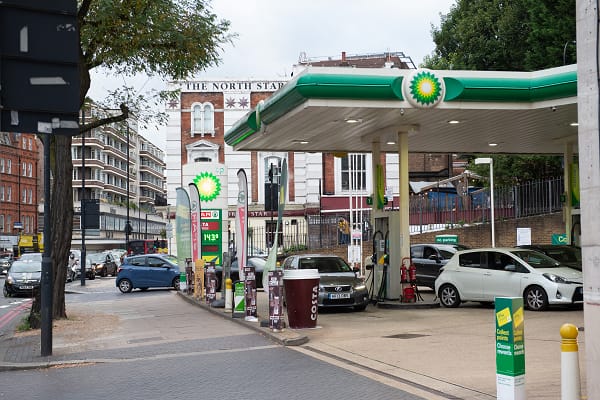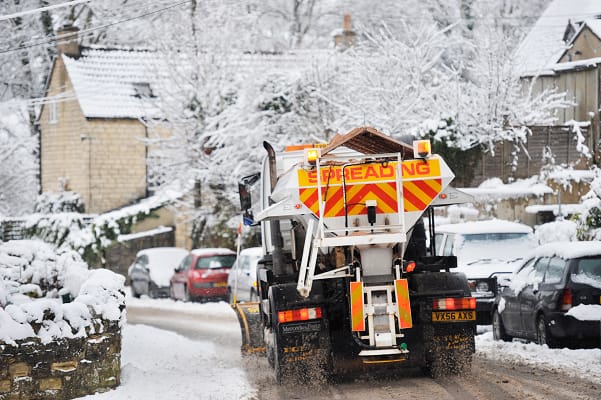Learning the lessons of successive lockdowns and refocusing UK retail accordingly means the sector still has a promising future, a group of industry experts have agreed.
Discussions at an industry round table event hosted by Maybe Tech agreed that although the sector needs to change, with new partnerships, offers and brands created. If the sector ‘doesn’t waste a good crisis’, it was agreed, then there are grounds for optimism for the future of UK retail.
The discussions have been summarised in a new White Paper, “How The Retail Sector Can Survive & Thrive Post-Pandemic”, that is free to download.
“It’s easy against the background of the past twelve months to become despondent about the future of retail. But it’s important to also recognise we can be optimistic,” explains Polly Barnfield, CEO of retail tech specialists Maybe Tech, a member of the Government’s High Streets Task Force.
“Around the world, as countries have come out of lockdown, footfall has come back. We saw that in the summer here as well and there is no reason to assume it won’t be the case again as restrictions are eased further.”
Working from home since the start of the first lockdown has forced everyone to be and think more local. As the retail sector emerges from the pandemic, the renewed value on localism and local service is likely to endure. What has become clear, the panel agreed, is how across the country, retailers have shown themselves to be not only resilient but also imaginative and innovative.
“As an independent retailer we don’t have any red tape to go through as a larger retailer might,” says Sophie Scarrott, who owns Keith Scarrott Shoes in Cheltenham. “I can just go into the shop, get all my stuff together and say, “Right, this is what we’re going to do.” And we can implement it straightaway.”
“In terms of independent retailers, I think they recognised two significant societal changes,” explains Andrew Goodacre, CEO of bira, the British Independent Retailers Association. “One is the accelerated move online, and we’ve seen more of our members trade online than ever before, some doing it very well, some less successfully but learning all the time. And I think the other factor that influences people’s behaviours will be many more people now working where they live.”
This was a point echoed by Dr Diane Savory OBE, Chair of the Gloucestershire Local Enterprise Partnership and a member of The High Streets Task Force and the Retail Sector Council.
“We need to focus on the importance of place and community. It isn’t just about retail anymore. We also need to consider our young people and how we actually appeal to them in our places. And diametrically opposed to that is our aging population, so we have two ends of the spectrum and how they’re both going to want to be in those places. The other factor that’s coming to bite us, whether we like it or not, is green streets and being net carbon zero.”
So, is bricks and mortar dead?
“From our experience bricks and mortar is far from dead,” says Nigel Keen, Group Property Director at JD Sports Fashion. “As long as you’re operating within that joined-up marketplace and offering the customer what they want, giving them the customer service, giving them a reason to want to shop in a shop. If you have a product that people generally want to touch and feel, then I think they’ll be a race back to the stores.”
“There is the possibility that we might come to see online as serving more of our commodity needs, our repeat purchases,” explains Andrew Busby, Founder of retail and consumer specialists, Retail Reflections.
“If we want something more personal where perhaps we’re treating ourselves, whether it be jewelry or clothing or maybe electronics, we will want the experience of going to a physical store. We will want to engage with somebody who’s knowledgeable and who can help us with that.”
One of the biggest problems for larger retailers has been a lack of investment and the ability to move quickly, a point discussed by Kerry Northfold, Group Estates Manager at Arcadia.
“A lot of the multi-retailers were crying out for data about when lockdowns were happening and when we would be coming back out of them. Locking down just before Christmas on mass was a huge feat, with all of your stock just locked inside. And if, when you emerge, your stock isn’t right for the time of year you are entering into, that’s a real challenge. But we will reach a point where shopping is still happening with interesting brands. But that means creating new brands that are still attractive to consumers and have a point of difference.”
But there remain other challenges and opportunities both in the way physical destinations operate – not least, the relationship between landlords and tenants – how bricks and mortar retailers deploy technology to better effect and achieving a closer relationship and understanding between retailers and their customers. There is a need incubate new ideas and new retailers to bring them into the High Street and to help them navigate those difficult first couple of years to establish a business model that helps them to operate.
For large retailers pre-Covid trends are likely to continue, with profitability continuing to decline. For many, the offer has been weak for some time. Increased costs have been put onto reducing the quality of the product and trying to maintain margin. Fixed asset costs, fixed costs within the physical space, and increasing revenue costs online, including the constant desire to compete with the likes of Amazon, creates a perfect storm.
“A lot of larger retailers are likely to continue to go the way that Debenhams and Arcadia and others have gone,” explains John Scott, CEO of Liminal Retail & former International Director of Debenhams and TM Lewin. “But hopefully it will open up space for new brands and new retailers to come through, which hitherto have just gone online.”
“We need to create excitement and create brands, that everyone wants to buy into,” explains Michelle Buxton, CEO of the Toolbox Group:
“In terms of retail regeneration, we should be looking at how we should be bringing our town centres and our shopping centres together. It’s a great opportunity to start a whole new generation of retail: of people wanting to see things in a different way. Perhaps a store that’s a nail bar and a coffee shop, and a wine bar in the evening. We’ve always gone for single uses and that’s got to change.”
It was also agreed that retailers are still not utilising social media and technology as much as they should be in order to connect with the new generation of shoppers.
“We are human beings, we want a physical experience, and digital is just part of that experience. So, digital doesn’t equal ecommerce, it equals making the physical experience better,” explains Polly Barnfield. “And so, from that, successful in-store retail is all about focusing on locality, service and experience. But it’s important to increase the digital skills throughout retail businesses, let social media and the data it reveals be the tools that the entire sector embraces. We have to do more to get to know customers better – the in-store customer as well as the online customer. Opportunities abound – that’s what needs to be the overarching theme.”






Leave a Comment